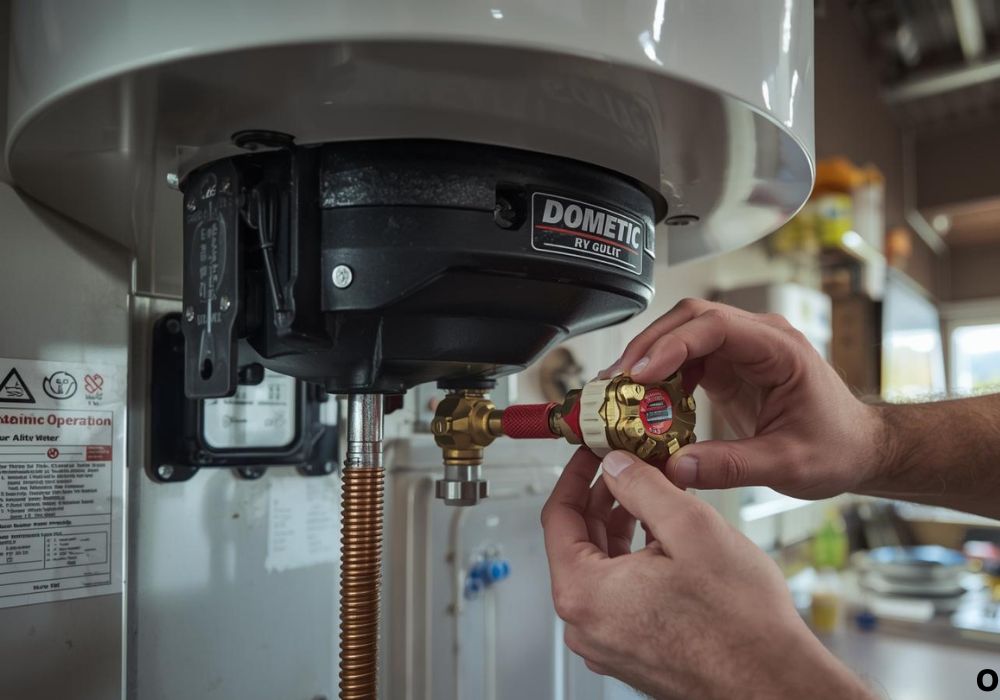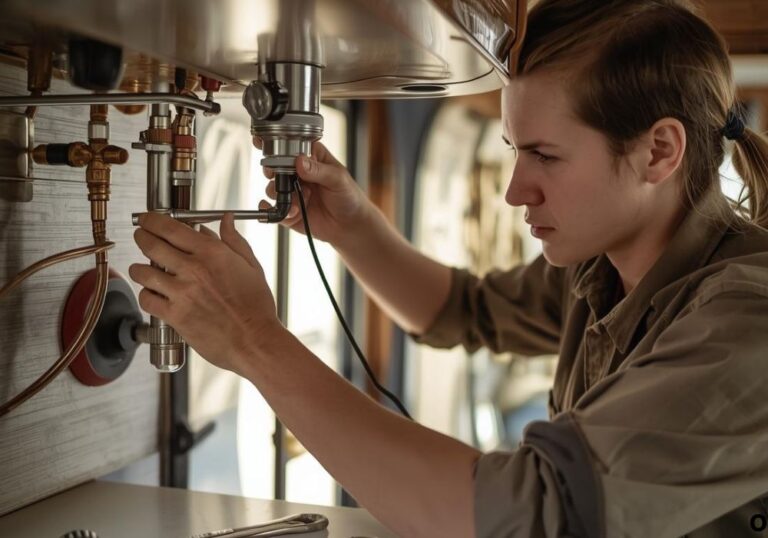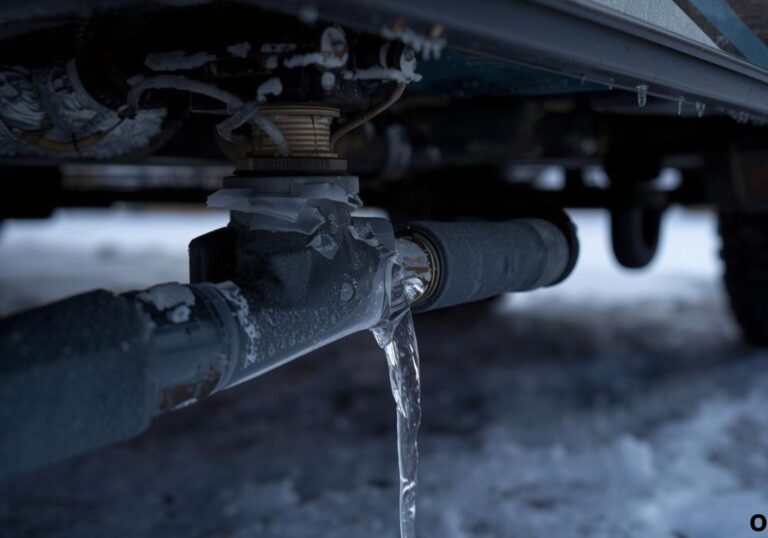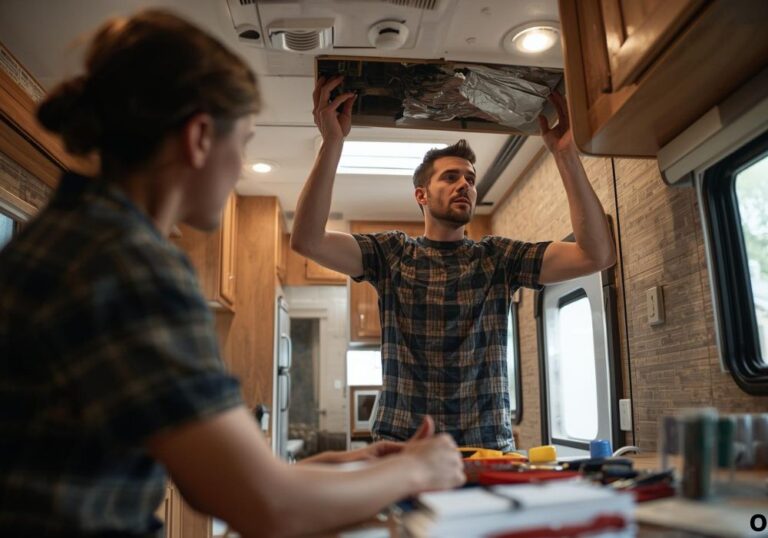DIY Guide: How to Use Dometic RV Water Heater Safely
After a long day of traveling, you’ve just parked your RV at the campground, eager for a hot shower. But when you turn on the water heater, you realize you’re not entirely sure how to operate your Dometic RV water heater safely and efficiently. Many new RV owners feel the same, and using the heater incorrectly can cause issues like insufficient hot water, leaks, or electrical problems.
Dometic water heaters are popular for their reliability and versatility, offering LP gas, electric, or combination operation. Each mode has its own setup and safety considerations, so understanding how your specific model works is essential to prevent damage and ensure proper function.
This guide provides a step-by-step process for using your Dometic RV water heater safely. You’ll learn operational steps, safety precautions, troubleshooting tips, and preventive maintenance practices to keep your water heater functioning efficiently on every trip.
By following this guide, you can enjoy consistent hot water, prevent costly repairs, and maintain a safe, reliable system in your RV. Proper knowledge and proactive care will keep your water heater working optimally for years to come.
Overview of Dometic RV Water Heater

Dometic water heaters come in several types: LP gas, electric, and combination models that use both power sources. Each type is designed to provide reliable hot water for showers, sinks, and appliances, but they operate slightly differently depending on the energy source.
Key components include the water tank, heating element, pilot assembly, thermostat, and control board. Understanding these parts helps you safely operate, troubleshoot, and maintain your water heater for long-term reliability.
Gas models rely on a pilot flame and thermocouple to regulate heating, while electric models use a heating element controlled by the circuit board. Combination models offer flexibility, allowing you to use whichever power source is available.
Tank capacity varies, typically between 6 and 10 gallons, providing enough water for average RV needs. Heating speed and flow rate depend on the tank size, mode of operation, and water pressure.
Dometic water heaters include safety features like automatic shutoff and pressure relief valves to prevent overheating and protect the plumbing system. Following the manufacturer’s guidelines ensures these safety features function correctly.
Tools and Materials Needed
Before starting, have your RV water heater manual on hand to follow instructions and safety recommendations.
Freshwater hoses rated for potable water are required when filling the onboard tank or connecting to city water. Using a non-rated hose can lead to contamination or unsafe drinking water.
A pressure regulator is essential when connecting to city water to prevent over-pressurization, which can damage pipes, valves, and appliances.
Hose washers, adapters, and optional water filters help create leak-free connections and ensure safe water quality. Filters are particularly useful at older campgrounds with variable water quality.
Safety gloves protect your hands when handling hot surfaces or connections, and cleaning cloths help keep your workspace tidy.
A flashlight is handy for inspecting components inside panels or behind the heater. Organizing all tools and materials before beginning ensures a smoother, safer operation.
Step-by-Step Guide to Using Dometic RV Water Heater
Step 1: Turn off all power and gas before initial setup. This ensures your safety and prevents accidental activation. Double-check that all switches, breakers, and valves are off before handling any components.
Step 2: Fill the freshwater tank or connect to city water using a potable hose. Ensure the system is free of leaks before turning on the heater. Using a clean hose ensures that the water remains safe for drinking and cooking.
Step 3: Access the water heater control panel and select the operation mode: LP gas, electric, or both. The choice depends on available energy sources and personal preference. Confirm that indicator lights show proper activation.
Step 4: For LP gas models, manually light the pilot if required. Follow the manufacturer’s safety instructions carefully and ensure the flame is steady and blue, which indicates proper ignition.
Step 5: Adjust the thermostat to your desired temperature, typically between 120°F and 140°F for safe use. Avoid setting it too high to prevent scalding and stress on plumbing components.
Step 6: Allow the heater time to reach full temperature. Test faucets to verify hot water output and proper flow throughout your RV.
Step 7: Inspect hoses, connections, and valves for leaks or loose fittings. Tighten or replace components as necessary to prevent water damage.
Step 8: Turn off the water heater when not in use and disconnect city water if leaving the campsite. Proper shutdown prevents accidental flooding and reduces wear on the system.
Extra tips: Avoid overfilling the tank, monitor water pressure with city hookups, and flush occasionally to remove sediment. Correct handling prolongs the life of your water heater and prevents costly repairs.
Safety Tips While Using Dometic Water Heater
Always read your RV water heater manual before operation to understand controls, indicators, and safety features.
Never operate gas-powered heaters in poorly ventilated areas. Proper ventilation prevents carbon monoxide buildup, which is dangerous.
Do not set the thermostat above recommended levels, as high temperatures can cause burns and stress the plumbing.
Regularly inspect hoses, valves, and connections to prevent leaks, contamination, and water damage.
Use a soapy water solution to check for gas leaks at all fittings. Never ignore the smell of gas; turn off the supply and address the issue immediately.
Wear insulated gloves when adjusting hot components or inspecting the pilot assembly.
Turn off the water heater when not in use to prevent accidental activation and monitor water temperature for safety.
Troubleshooting Common Issues

If the pilot light won’t ignite, check the thermocouple, igniter, and gas supply. Debris in the pilot tube can also block ignition.
Water not heating properly may indicate a faulty heating element, incorrect thermostat setting, or an issue with the control panel.
Inconsistent water temperature can result from improper mode selection, thermostat calibration, or low water pressure.
Leaks often occur around hoses, valves, or fittings; replace washers or tighten connections if necessary.
Electrical issues, such as tripped breakers or blown fuses, may indicate a wiring problem or faulty circuit board.
Strange noises like popping or gurgling are often caused by sediment buildup. Flushing the tank periodically can resolve this.
Reduced water flow may indicate clogged faucets, filters, or water lines; inspect and clean them regularly.
Preventive Maintenance for Dometic Water Heater
Flush the tank periodically to remove sediment, which prolongs the life of the heating element and ensures efficient heating.
Clean and inspect the pilot assembly, burner, and heating element to prevent clogs or corrosion.
Test the thermostat and heating element regularly to ensure accurate temperature regulation and safe operation.
Inspect hoses, connections, and fittings for wear, leaks, or cracks; replace any damaged components promptly.
Store your RV water heater properly during winter or long-term storage to prevent freezing, corrosion, or damage.
Document all maintenance, inspections, and replacements for future reference and easier troubleshooting.
Routine testing and preventive care ensure consistent hot water and prevent unexpected failures while traveling.
Cost Considerations
Dometic water heaters range from $400–$800 depending on the model and features.
Replacement parts, such as thermocouples, igniters, thermostats, or heating elements, cost between $20–$150.
Freshwater hoses, pressure regulators, and optional filters may range from $15–$50.
DIY setup saves labor costs, whereas professional installation or repair can exceed $100.
Investing in high-quality hoses, regulators, and replacement parts ensures long-term reliability and reduces future maintenance.
Regular preventive maintenance saves money by preventing expensive repairs and extending the life of the water heater.
Frequently Asked Questions (FAQ)
How do I turn on a Dometic RV water heater?
Select the desired operation mode and ensure the pilot or heating element is functioning.
Do I need to fill the freshwater tank?
Yes, the heater requires water in the tank to operate safely.
Can I use city water instead of the onboard tank?
Yes, connect a potable hose with a pressure regulator to prevent overpressure.
What temperature should I set the thermostat?
Typically, 120°F–140°F is safe and effective for most uses.
How do I light the pilot?
Follow the manual instructions for LP gas models, using safety precautions.
Why is my water not heating?
Check heating element, thermostat, or control panel for faults.
How do I prevent sediment buildup?
Flush the tank periodically and use clean water sources.
Can I leave the water heater on continuously?
Not recommended; follow manufacturer guidelines to prevent overheating.
How do I check for leaks?
Inspect hoses, valves, and fittings and tighten or replace faulty components.
Is it safe to operate the heater while driving?
No, only operate when stationary to prevent accidents or damage.
What if the pilot keeps going out?
Check thermocouple, igniter, and gas supply.
Can I use a water filter?
Yes, optional filters improve taste and reduce sediment.
How often should I inspect the water heater?
Before each trip and periodically during extended stays.
What if the breaker trips?
Check electrical connections, fuses, and circuit board.
Can I adjust the heater for winter use?
Yes, lower thermostat and insulate hoses to prevent freezing.
Conclusion
Using your Dometic RV water heater safely ensures a consistent supply of hot water for showers, cooking, and cleaning. Following proper setup, operation, and shutdown procedures prevents leaks, overheating, and system damage.
Regular inspection, preventive maintenance, and cleaning extend the heater’s lifespan and protect your RV plumbing system. Troubleshooting minor issues early avoids costly repairs and ensures reliable performance.
By following this guide, you can confidently operate your Dometic RV water heater, enjoy safe hot water on every trip, and maintain the system for years of dependable use. Proactive care ensures comfort, safety, and convenience during all your RV adventures.
I’m David R. Coleman, the founder, lead writer, and lifelong tool enthusiast behind GarageToolPro.com. With years of experience in automotive repair, woodworking, and home DIY projects, I created this platform to share practical tips, detailed tool reviews, and step-by-step guides that help mechanics, hobbyists, and homeowners get the job done right the first time.






